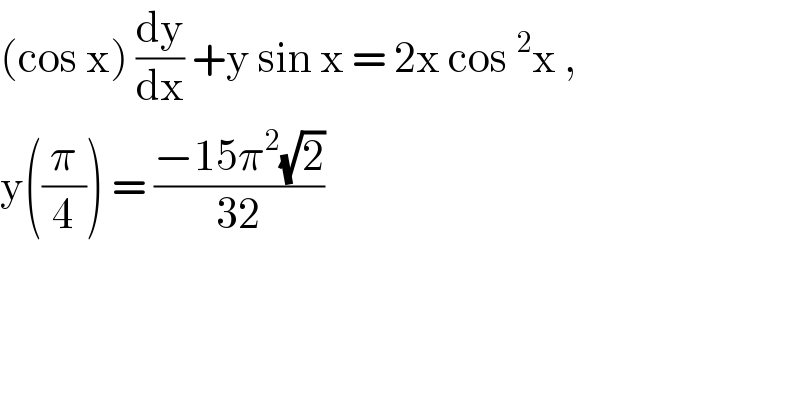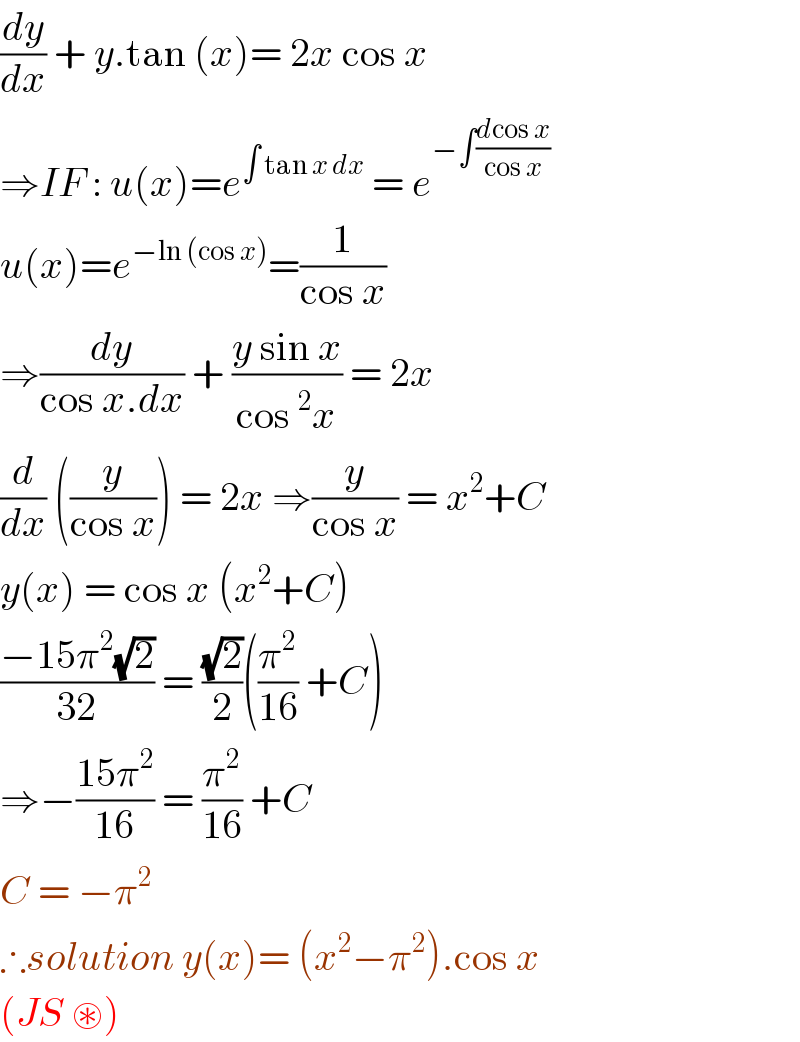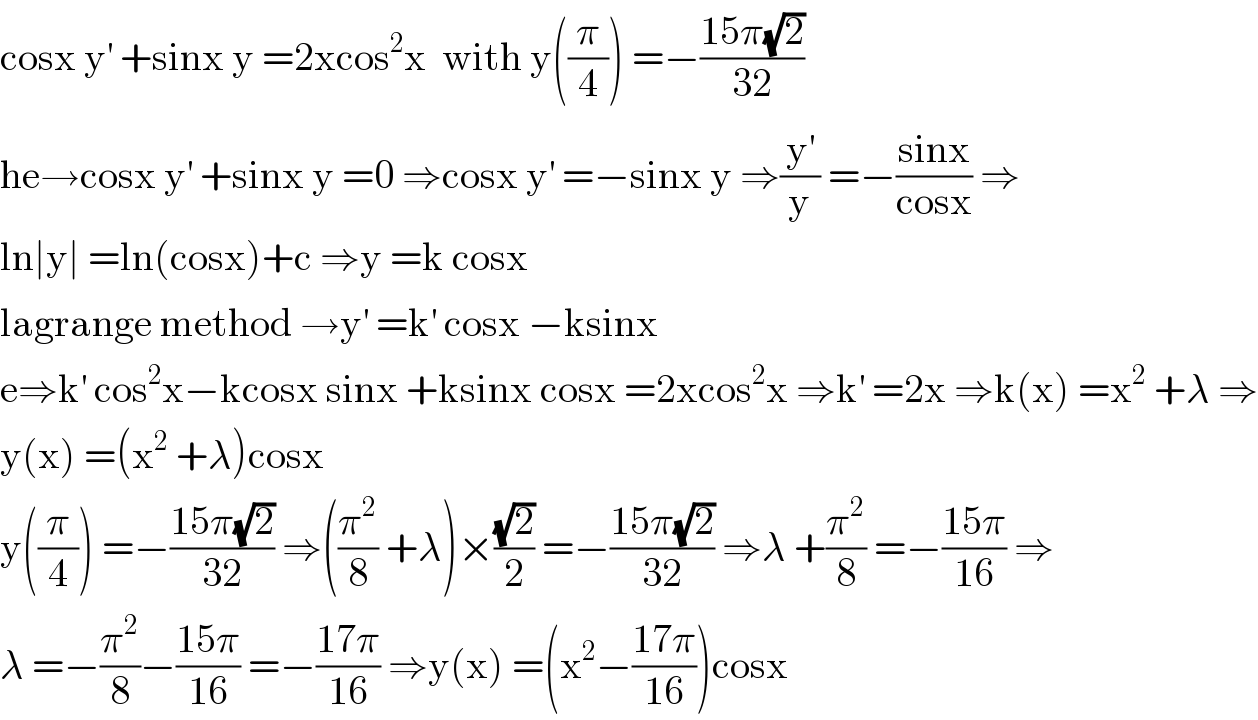
Question and Answers Forum
Previous in Differential Equation Next in Differential Equation
Question Number 101848 by bramlex last updated on 05/Jul/20

Answered by john santu last updated on 05/Jul/20

Commented by bramlex last updated on 05/Jul/20
macho...������
Answered by mathmax by abdo last updated on 05/Jul/20

Commented by john santu last updated on 05/Jul/20

Commented by mathmax by abdo last updated on 05/Jul/20

